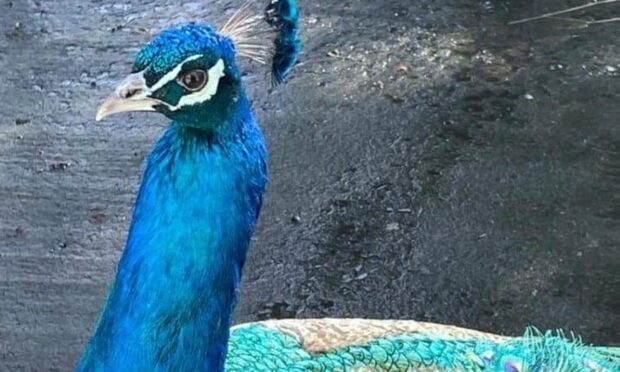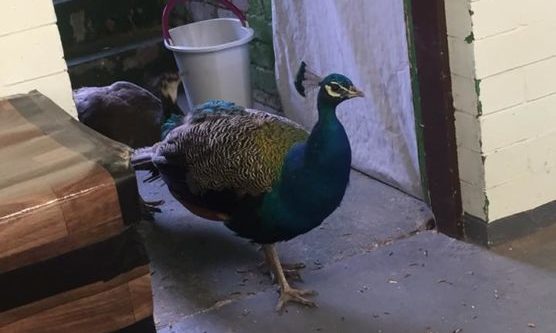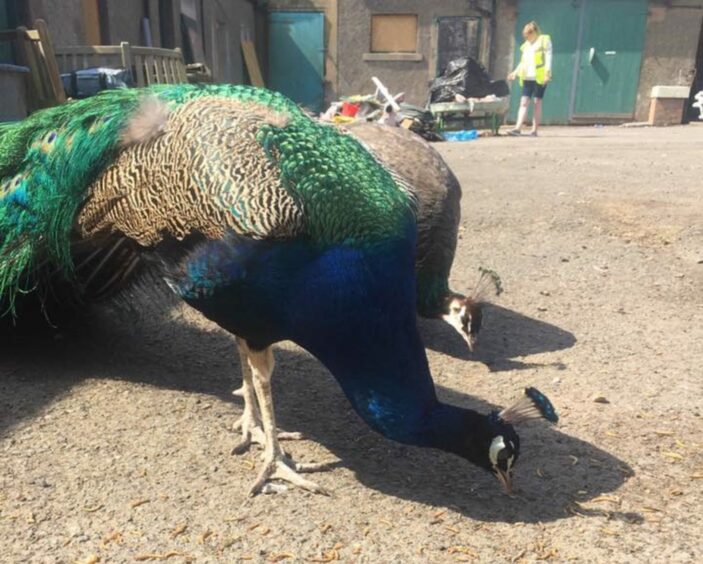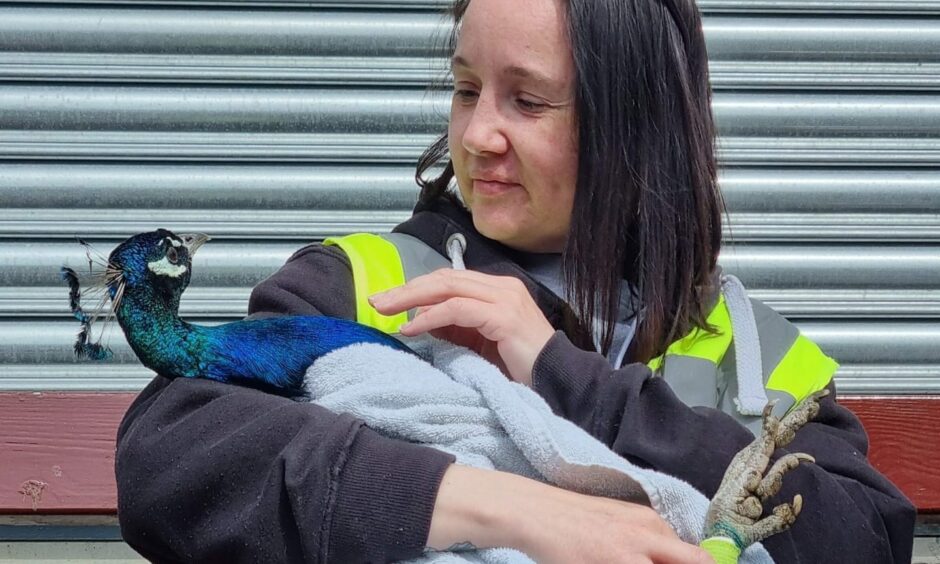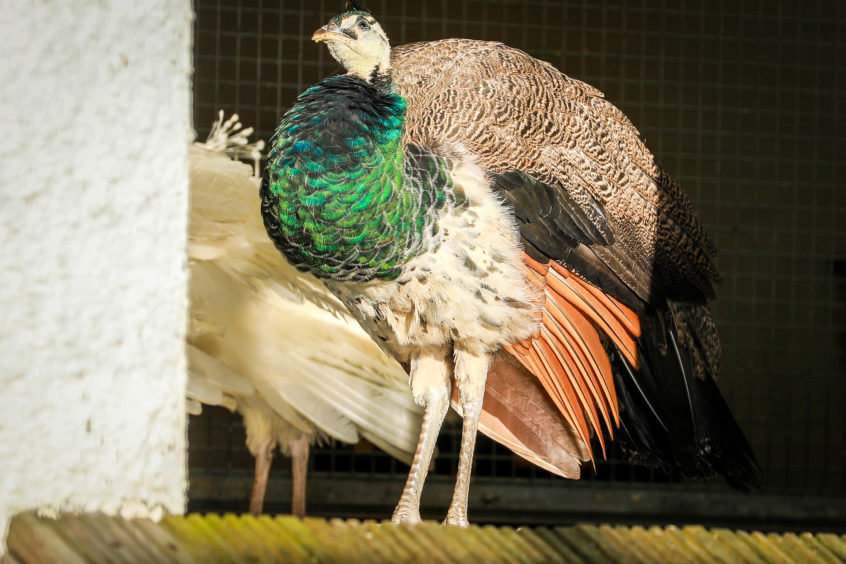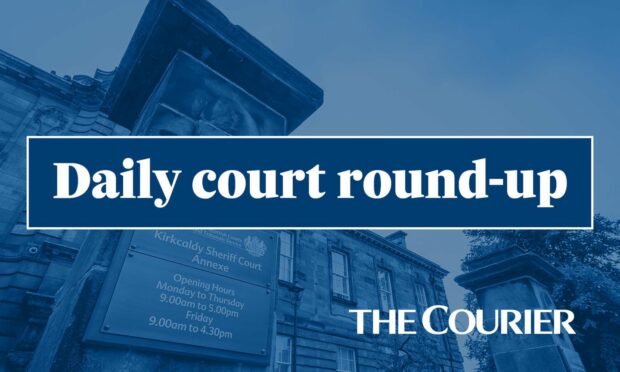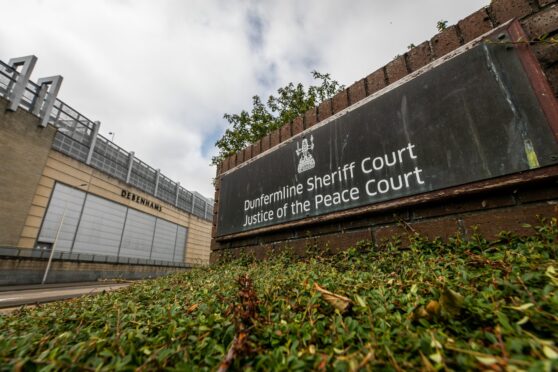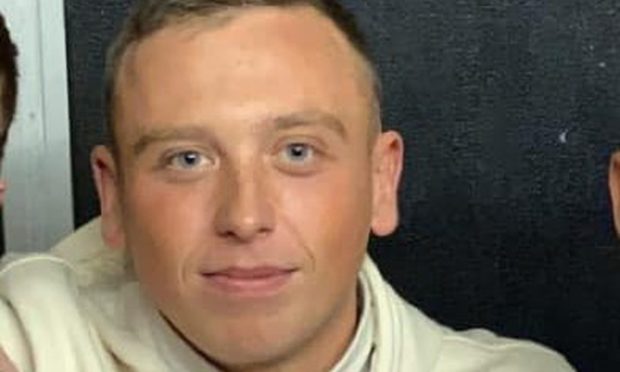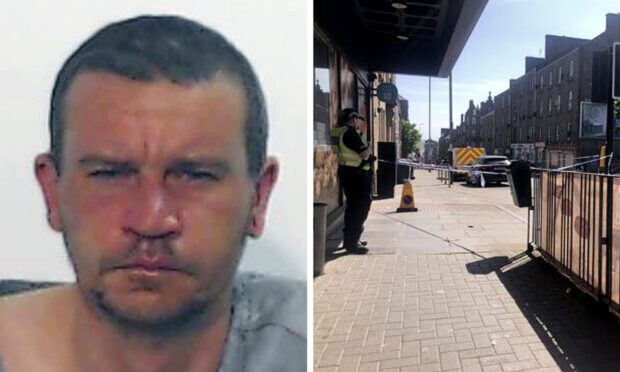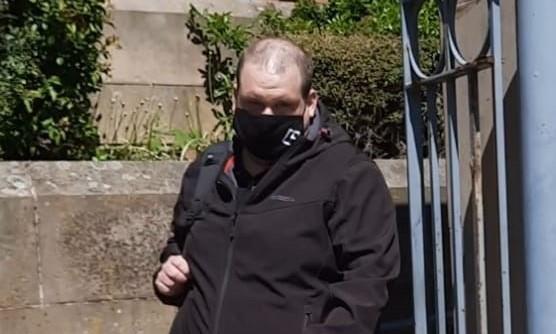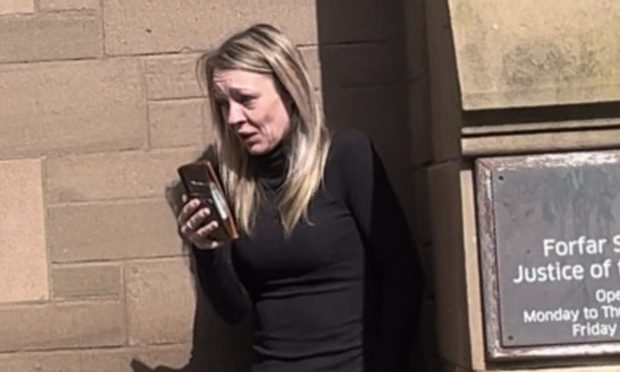The killing of a peacock during a break-in to a Fife aviary has been “investigated and dealt with” by the Children’s Hearings System – but a veil of secrecy remains over the final outcome.
The bird, Malcolm, was found dead at the sanctuary in Pittencrief Park, Dunfermline, and another peacock called Louis was badly injured in the May 30 attack.
Police identified two boys – aged 11 and 13 – following the shocking incident and a report for the older child was submitted through the Youth Justice System.
Peacocks in Pittencrief Park – the group which looks after the birds – said Malcolm was tortured.
Photographs seen by this newspaper show severe injuries to Louis’ leg and neck.
No new information given
The Courier asked the Scottish Children’s Reporter Administration (SCRA) for an update on the case.
A spokesperson said: “A referral was made to the Children’s Reporter in connection with this.
“The matter was investigated and dealt with by the Children’s Hearings System.
“We cannot comment on individual children or young people’s cases to protect their identities and confidentiality.”
No more information was provided on exactly how the matter was dealt with.
Peacocks in Pittencrief Park have also been left in the dark as they are not classed as a victim, which needs to be a named individual rather than a collective group.
Confusingly, a member of the aviary group has received a letter from the SCRA dated November 18 and seen by this newspaper, stating an application for Proof has been sent to court for a children’s hearing referral and “if the grounds are not agreed” they may be required to give evidence at court.
The SCRA were unable to tell us anything about this letter and why it had been sent when the case had, in their words, been “investigated and dealt with”.
The Courier did not ask for the boys’ identities – just how they had been dealt with.
One of the aviary group members also said they recently received a phone call from a vet asking for permission to release Louis’ medical records to the SCRA.
‘Traumatised’ by attack
A spokesperson for Peacocks in Pittencrief Park said: “We are extremely upset, angry and distressed at the way the atrocious attack on our beloved birds has apparently been ‘dealt’ with and that the SCRA do not see fit to inform us of the outcome of one of the most traumatic experiences we have ever been forced to deal with, nor do they class us as victims.
“We cannot understand how we have never had involvement in this case and how they cannot take us into consideration.
“If this was a family pet then surely the owner would be considered?
“We look after those birds to the best of our ability 365 days a year and are very attached and invested.
“Malcolm was such a beautiful and gentle boy and he did not deserve the horrible death he was given.
“Louis was extremely traumatised and suffered extensive injuries and they both deserve justice”.
The spokesperson said a person who witnessed the attack that night, as well all aviary volunteers, had to endure the “many horrors that were left in the aftermath.”
A number of the volunteers spent hours tending to Louis’ appalling injuries and giving him medical treatment for months afterwards.
‘Dunfermline won’t forget’
The spokesperson continued: “The peafowl are synonymous with Dunfermline and are very much loved, as was evident in the outpouring of grief, anger, and community spirit that shone through the darkness”.
They said the people of Dunfermline were “shocked and horrified” by the mindless brutality of those responsible and that it is “incomprehensible” that they will not find out what happens to them.
The spokesperson said there is “much doubt” in the minds of volunteers the case will have been dealt with appropriately and questions have been asked about what deterrent is in place to prevent the perpetrators from harming animals – or even humans – in future.
They said they now “live in constant fear” for the birds, adding: “The attack in May 2022 traumatised so many volunteers and members of the public, worldwide and Dunfermline will never forgive, or forget”.
Role of Children’s Reporter
A Children’s Reporter receives referrals – for instance from police or social work – and decides whether the the child should be referred to a Children’s Hearing.
The SCRA website says this decision will depend on the circumstances of the case and the information available.
The Reporter will examine the child or young person’s background, taking into account their family circumstances and any previous behaviour or offences.
For offence referrals, the Children’s Hearings System operates on the same evidential basis – beyond reasonable doubt – as the criminal justice system, and there are cases where there is insufficient evidence to proceed further.
After carrying out their investigation, the Reporter has a number of options available.
A child or young person will only be referred to a Children’s Hearing if:
– The Reporter is satisfied that one or more “grounds for referral” exists as stated in Section 67 of the Children’s Hearings (Scotland) Act 2011.
– There is a need for compulsory measures of supervision to either protect the child or young person and/or address their behaviour.
Grounds for referral may relate to the likes of the child suffering from lack of parental care, failing to attend school, committing an offence, misusing drugs or alcohol, or being the victim of abuse.
Compulsory Supervision Orders (CSO) are the most common form of compulsory supervision made by Children’s Hearings.
These orders vary. For example, a child could be required to live away from home with foster carers, in a local authority home or in a residential school – but most children on a CSO remain at home.
Where there is no requirement for compulsory measures of supervision, children and young people can be dealt with in other ways including restorative justice or tailored programmes to tackle their behaviour.
The age of criminal responsibility in Scotland is now 12 under the Age of Criminal Responsibility (Scotland) Act 2019.
Although the police can not charge a child with committing an offence when under 12, the police may still refer the child to a Reporter because of concerns about the child’s behaviour.
For the latest court cases across Tayside and Fife, join our dedicated Facebook page.
